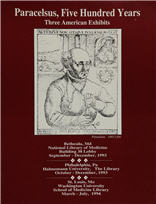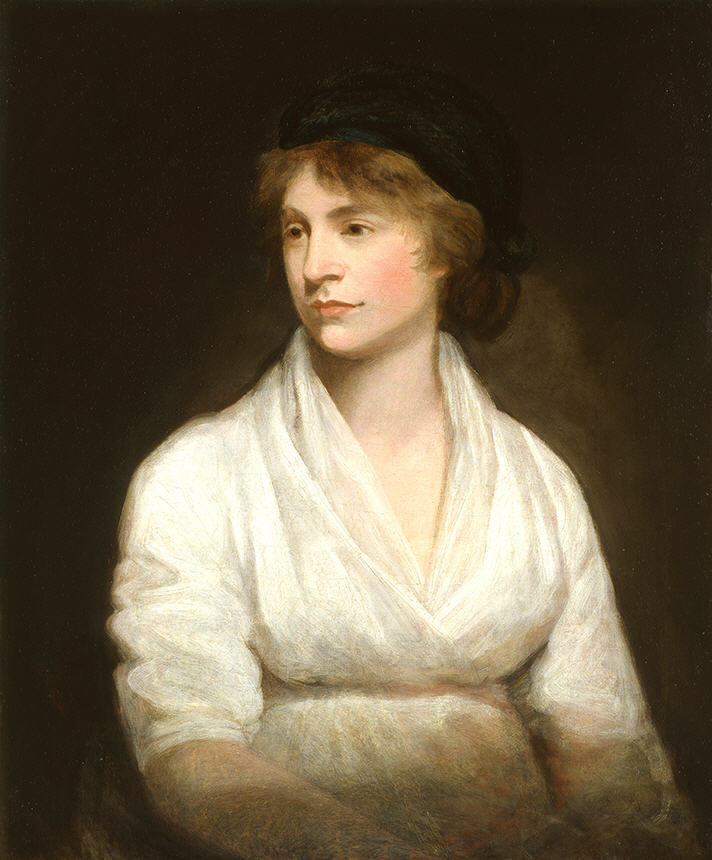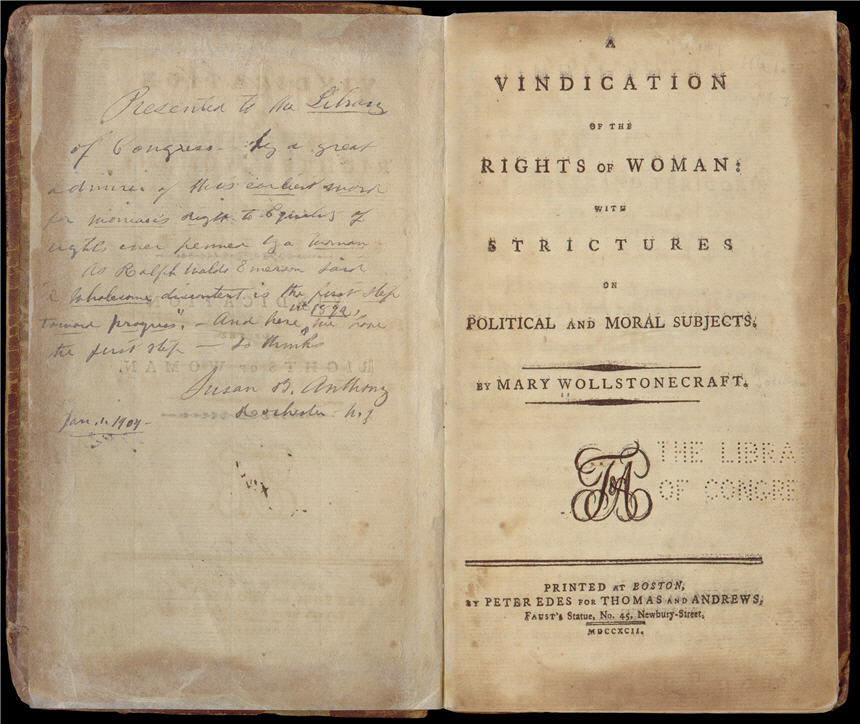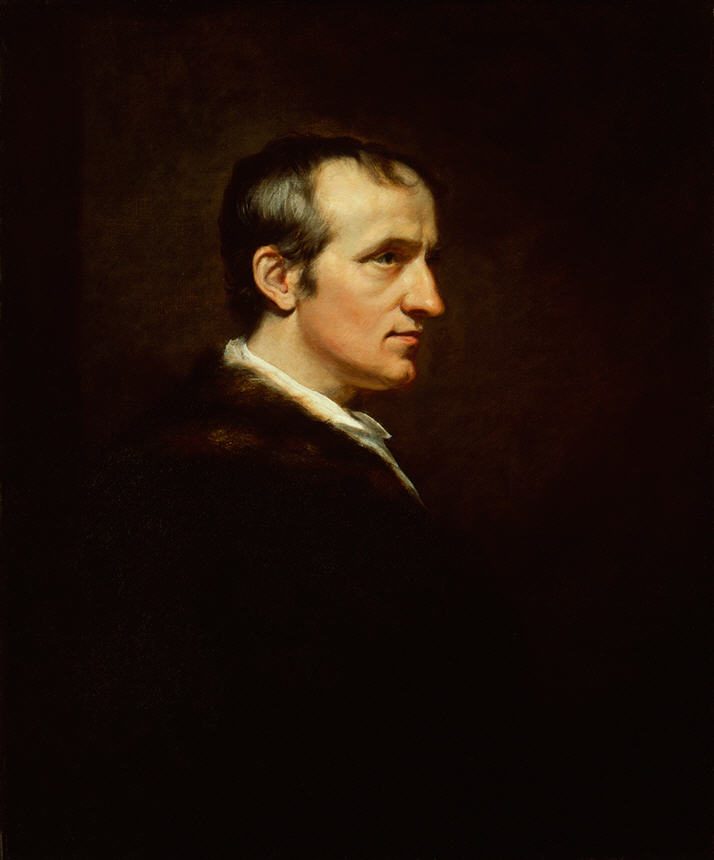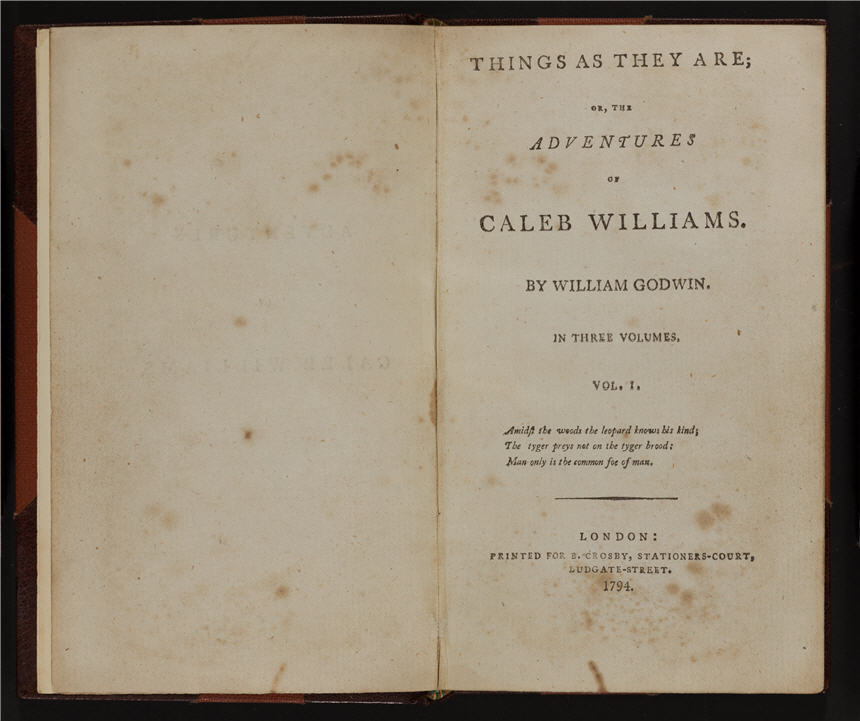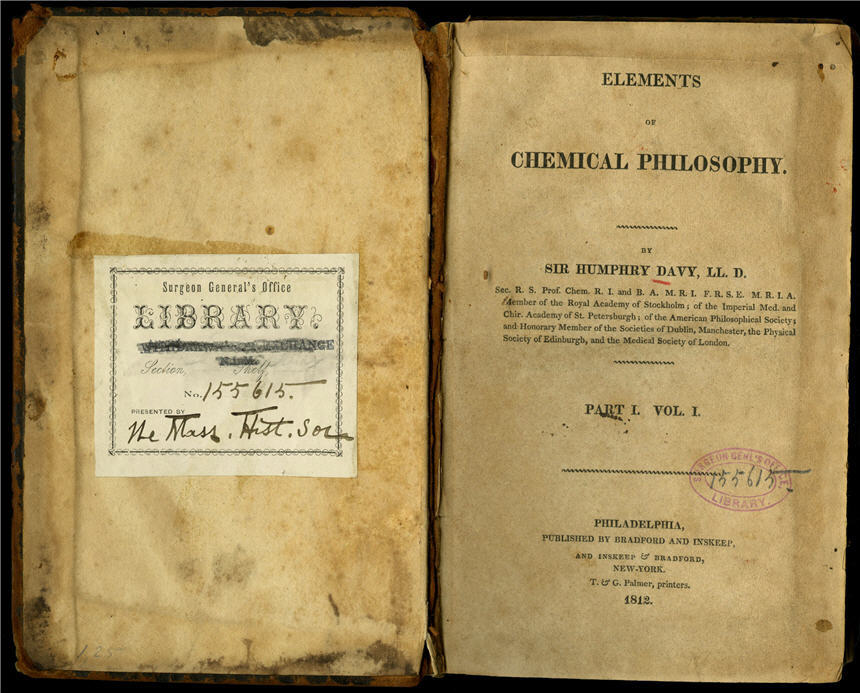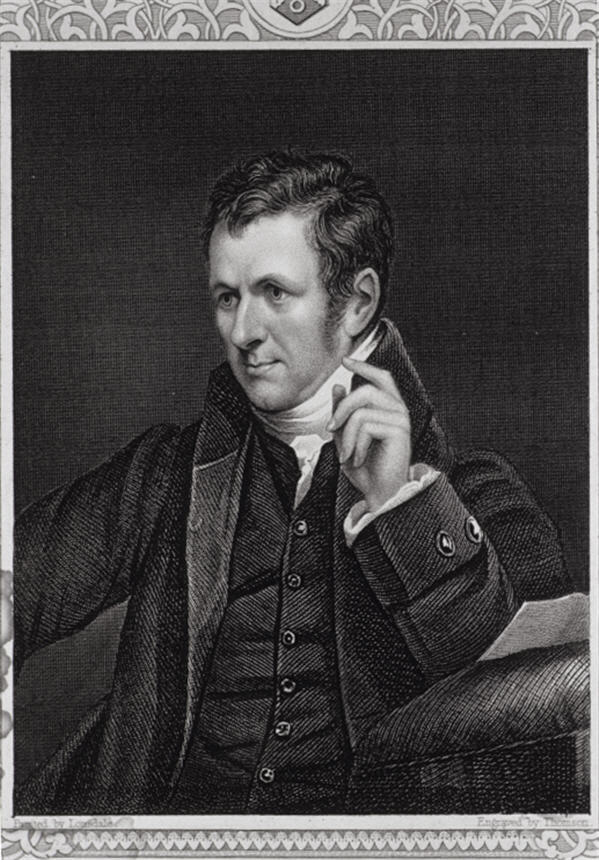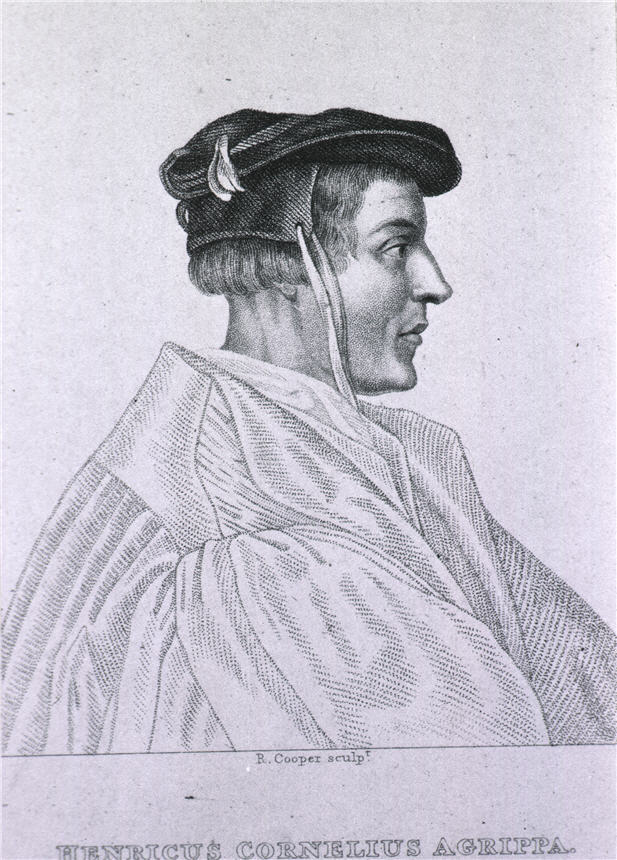The literary life attracted Mary Shelley from an early age. Her education stressed the development of the imagination; she was introduced to great works of literature, history, and mythology, and studied French and Latin. Her father’s London home attracted writers Samuel Taylor Coleridge and Charles and Mary Lamb, American politician Aaron Burr, chemist Humphry Davy, poet and physician Erasmus Darwin, and chemist-inventor William Nicholson.
Mary Wollstonecraft, oil on canvas, ca. 1797
Artist: John Opie (1761—1807)
Courtesy © National Portrait Gallery, London
Mary Wollstonecraft (1759—1797) earned her living as a governess before moving to London in 1787 to pursue a career as a writer. Within five years, she established herself as an influential and controversial political theorist. She married William Godwin in March 1797; she died in September of that year after giving birth to her daughter, Mary.
A Vindication of the Rights of Woman, with Strictures on Political and Moral Subjects, 1792
Author: Mary Wollstonecraft (1759—1797)
Courtesy Library of Congress
Mary Wollstonecraft’s book argued for women’s right to self-determination and equality in the intellectual, public, and domestic spheres. American feminist Susan B. Anthony presented a copy of “this earliest work for women’s rights to equality” to the Library of Congress in 1904.
William Godwin, oil on canvas, 1802
Artist: James Northcote (1746—1831)
Courtesy © National Portrait Gallery, London
William Godwin (1756—1836) perceived the political issues raised by the French Revolution as an opportunity to reorder the world to produce an egalitarian society structured on reason, justice, and universal education. He and Mary Wollstonecraft married in 1797; their daughter Mary was born August 30, 1797.
Caleb Williams, 1794
Author: William Godwin (1756—1836)
Courtesy Rare Book Room and Special Collections, University Library,
University of Illinois at Urbana-Champaign
William Godwin’s novel
Caleb Williams supported the arguments he had made for a republican, anti-monarchical government in his masterwork,
An Enquiry Concerning Political Justice (1793).
Elements of Chemical Philosophy, 1812
Author: Sir Humphry Davy (1778—1829)
Courtesy National Library of Medicine
In October 1816, when she was working on
Frankenstein every day, Mary Shelley recorded in her diary that she was reading Humphry Davy’s
Elements of Chemical Philosophy.
Sir Humphry Davy, ca. 1827
Artist: James Lonsdale (1777—1839)
Engraver: James Thomson (ca. 1788—1850)
Courtesy National Library of Medicine
Sir Humphry Davy (1778—1829), a friend of Mary Shelley’s father, William Godwin, held popular public demonstrations of chemical phenomena at the Royal Institution in London in the early 19th century.
-
Henricus Cornelius Agrippa
Artist: R. Cooper
Courtesy National Library of Medicine
In Frankenstein, young Victor Frankenstein reads the entire works of Cornelius Agrippa, hoping to master a “secret store of knowledge” about the natural world.



